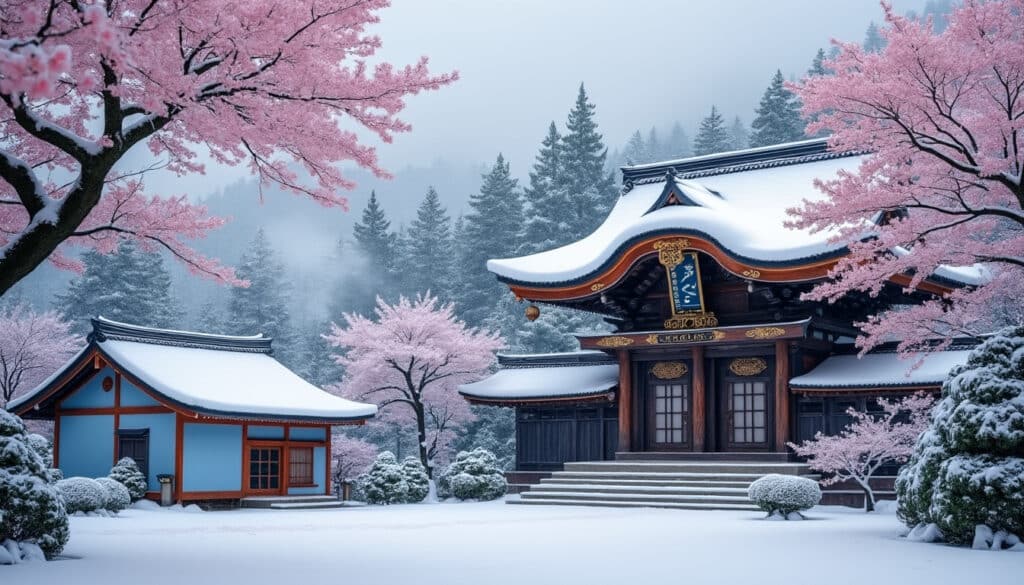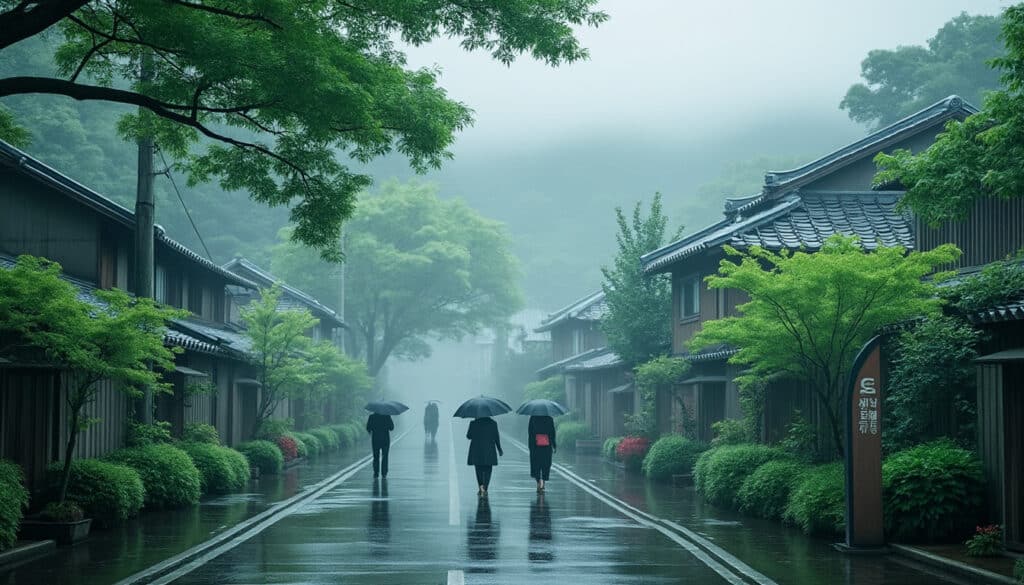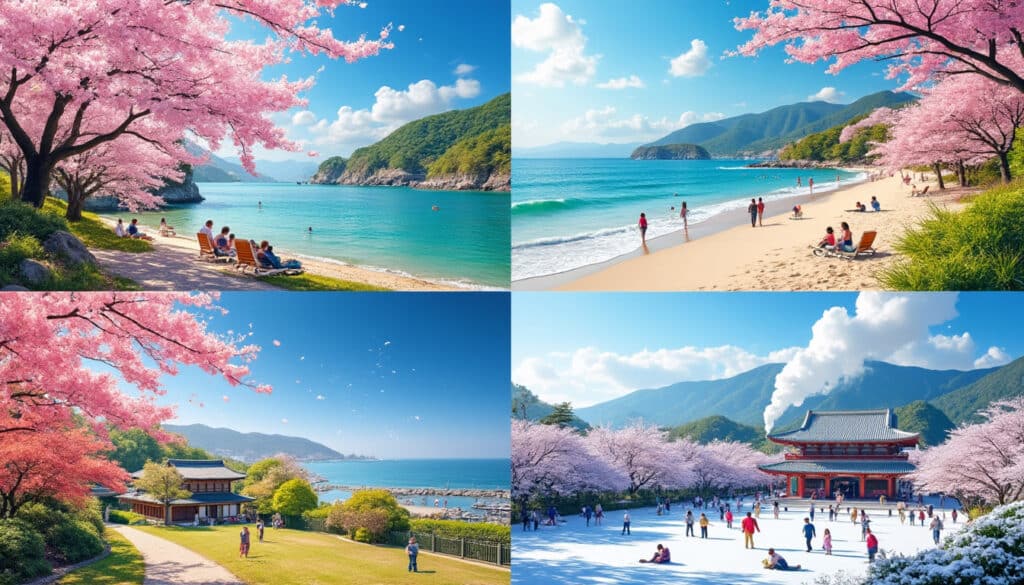Chiba, a bustling city in Japan, boasts diverse climatic conditions throughout the year, attracting visitors and residents alike who marvel at its unique blend of weather patterns. With its location nestled between the Tokyo Bay and the expansive Pacific Ocean, Chiba experiences significant temperature shifts, abundant rainfall, and varying humidity levels. This guide takes you through the monthly weather changes in Chiba, providing practical insights into what each month brings to the city’s meteorological landscape. From the stark cold of January to the hot, humid days of August, understanding Chiba’s weather helps plan activities, events, and travel more effectively.
January: Chilly Begins in Chiba
January marks the coldest month in Chiba, where the average daytime temperature hovers around 10°C, while nighttime can see temperatures drop to a chilly 3°C. These cold conditions stem from the city’s geographic position, allowing cold air from Siberia to influence the local atmosphere. Despite the lower temperatures, January is one of the sunniest months, with approximately 193 hours of sunshine throughout the month.
While the weather might be cold, January typically remains relatively dry, with about 74 mm of precipitation occurring over roughly 10 days. This makes it a suitable time for engaging in outdoor activities, although visitors are advised to bundle up warmly. Those interested in exploring Chiba during this month should consider visiting the famous Naritasan Shinshoji Temple, where celebrations for the New Year provide cultural richness to the cold season.
- 🌡️ Average maximum temperature: 10°C
- 🌡️ Average minimum temperature: 3°C
- ☀️ Sunshine: 193 hours
- 🌧️ Precipitation: 74 mm
Humidity levels during January rest at a moderate 53%, which, combined with the cooler temperatures, can sometimes make the air feel colder than it actually is. This interplay of temperature and humidity is a key consideration for those planning travel or events in Chiba during this period. For the full experience of Chiba’s winter, you can explore more about its cold weather phenomena at Chiba Traveller.
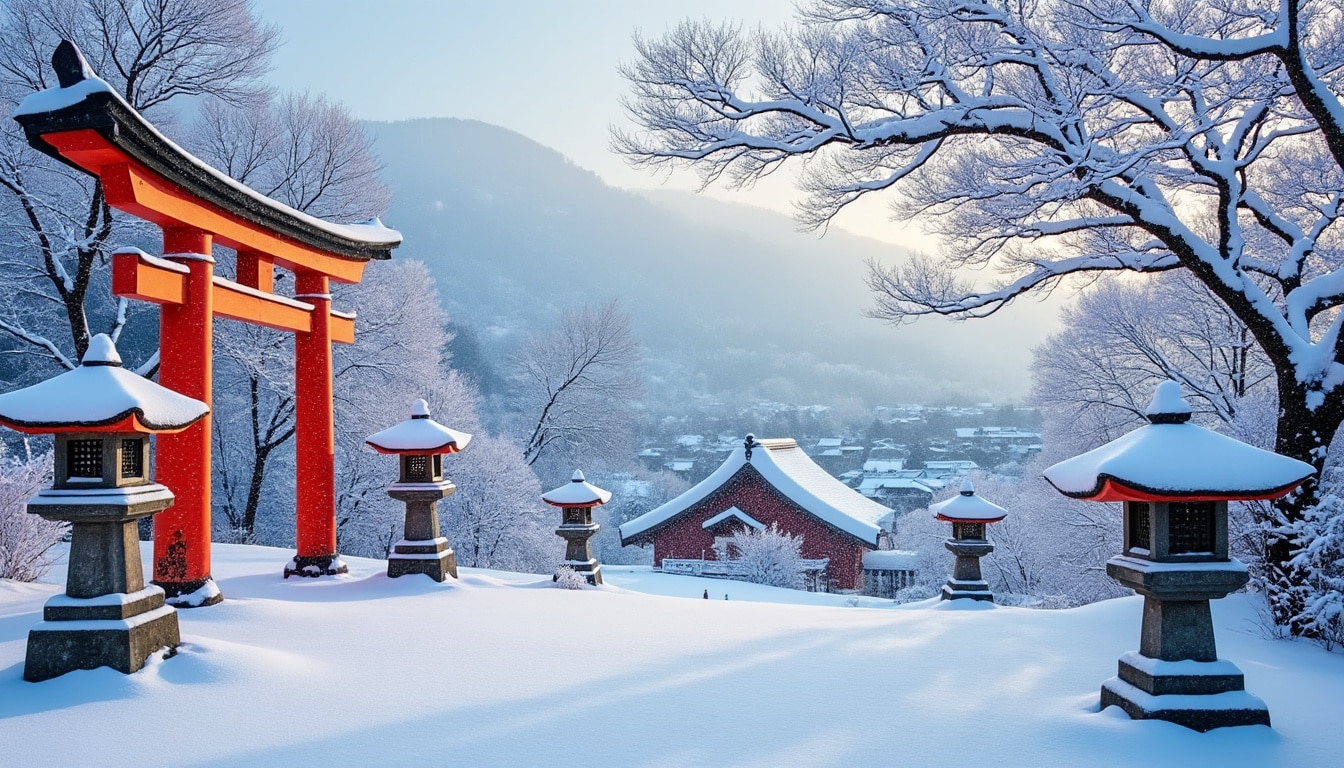
Unique January Weather Activities
Despite the cold, January offers unique opportunities for exploration and celebration. The New Year festivities at Naritasan, along with the early blooming of plum blossoms, provide both tourists and locals with enchanting experiences. The city’s manageable precipitation levels mean fewer interruptions to plans, allowing an uninterrupted exploration of winter festivities. For those who enjoy quieter paths, the cold crisp air and clear skies provide perfect conditions for photography or leisurely walks through the city’s scenic parks.
February: Gradual Warm-Up Begins
As February rolls in, Chiba begins a subtle transition from the depths of winter to slightly warmer climates. The average maximum temperature starts to inch upwards towards 12°C, with nighttime lows still resting around a brisk 4°C. The gradual increase in temperature is a prelude to the more significant warming trend seen in subsequent months.
February typically experiences around 84 mm of rainfall across 11 days, slightly wetter than January, which may impact outdoor activities. Despite the chill, the anticipation of spring is palpable, as plum blossoms gradually take center stage in gardens and parks, giving a refreshing visual lift to the cityscape amidst the cool air.
| Weather Element | February |
|---|---|
| Average High Temperature | 12°C |
| Average Low Temperature | 4°C |
| Rainfall | 84 mm |
| Sunshine Hours | 176 hours |
February’s weather invites a range of indoor and outdoor activities, facilitated by its controlled climate and vibrant events calendar. Whether you’re planning to visit the Japan Meteorological Agency to learn about local weather patterns or enjoy indoor attractions, February provides rich experiences. For more information about Chiba’s transition weather in February, see Chiba Traveller.
Preparing for a Visit in February
Visitors to Chiba in February should prepare for a mixed itinerary of indoor and outdoor activities. With fluctuating temperatures and occasional showers, it’s wise to pack accordingly. Visitors can indulge in culinary experiences, enjoy museums, or participate in indoor events. For nature enthusiasts, catching the early blooms is a tranquil delight. Booking hotels and tickets early is advised, as Chiba’s cultural offerings attract numerous attendees throughout the month.
March: Spring Blossoms and Rising Temperatures
March represents a true turning point for Chiba as spring takes hold. The city experiences a noticeable rise in temperatures, with daytime highs reaching about 14°C. The cool nights remain, albeit with milder temperatures compared to January. This pleasant shift marks the awakening of nature, with cherry blossoms starting to emerge, enticing both tourists and residents to partake in hanami, the traditional flower viewing.
The rainfall increases slightly, averaging around 118 mm spread over 13 days, offering a refreshing burst that aids the bloom of flowers and lush spring foliage across the region. The balance of moderate temperature and budding nature makes March an ideal month for outdoor excursions and cultural experiences.
- 🌸 Cherry blossoms begin to bloom
- 🌦️ Precipitation: 118 mm
- 🌡️ Average temperatures rise to 14°C
- ☀️ Longer sunshine hours: 205 hours
Spring in Chiba is a testament to nature’s renewal against the backdrop of urban life. The spectacle of cherry blossoms is best experienced at renowned spots such as Aobanomori Park. For those planning a visit, the guide to Chiba’s seasonal wonders offers valuable insights: Chiba Traveller.
March Outdoor Activities and Cultural Highlights
As temperatures rise, Chiba’s outdoor festivals and events come to life. Visitors are encouraged to explore the historical sites and partake in outdoor hanami gatherings, making it a culturally enriched season. Whether you’re attending city parades or simply enjoying the natural beauty, March offers a refreshing change and a wealth of experiences. Events are often centered around the cherry blossoms, providing opportunities for photography, leisure walks, and picnics under the bloom.
April: Pleasant Weather and Blossoming Flora
April in Chiba is arguably one of the most pleasant months, as spring fully envelopes the city with warm and inviting weather. Daytime temperatures steadily climb to around 18°C, with nighttime temperatures no longer reaching freezing points. The longer daylight hours and consistent warmth breathe life into the city’s landscapes, providing the perfect opportunity for outdoor adventures.
Precipitation remains moderate with an average of 128 mm spread across several days, though it does little to dampen the enthused spirit of spring. The festive mood continues as more flora bursts into bloom, showcasing vibrant colors and fragrances that characterize the essence of an ideal Japanese spring.
| Weather Element | April |
|---|---|
| Average High Temperature | 18°C |
| Average Low Temperature | 8°C |
| Rainfall | 128 mm |
| Sunshine Hours | 215 hours |
The lovely April climate brings forward a variety of cultural and natural events. Festivals dedicated to the various blooming flowers can be enjoyed, with many occurring in the city’s beautiful parks and gardens. For further exploration, you can visit Chiba Traveller to learn more about activities available in April.
April Festivals and Visitor Tips
During April, Chiba hosts a wide range of festivals that capture the spirit of spring with elaborate displays and community events. From flower festivals to tea ceremonies, visitors can immerse themselves in tradition and seasonal beauty. Tips for visitors include dressing in layers to adapt to temperature fluctuations and making advanced reservations for popular festivals to ensure admittance and convenience.
May: Embracing Mid-Spring’s Warmth
May is when Chiba truly embraces the full warmth of spring, with average daytime temperatures climbing to about 22°C. This month marks the peak of comfortable weather before the intense summer heat rolls in. May enjoys extended daylight and offers abundant opportunities to explore the outdoors, partake in recreational activities, and enjoy the city’s lush greenery.
The precipitation level sees a slight uptick with an average of 140 mm spread across the month, but this does not detract from the generally pleasant weather that May brings. The increasing warmth coaxes yet more flora into bloom, painting the cityscape with an array of vibrant colors, which are ideal for enthusiasts of nature and photography.
- 🌿 Peak spring warmth
- 🌦️ Moderate rainfall: 140 mm
- 🌡️ Comfortable temperatures at 22°C
- ☀️ Sunshine approximately 220 hours
May is a continuation of the vibrant spring atmosphere and comes with an array of outdoor celebrations and events. Visitors are encouraged to enjoy Chiba’s beautiful parks and nature trails. For detailed insights into how Chiba thrives in May, Chiba Traveller provides a comprehensive guide.
Outdoor Activities and Travel Tips for May
May invites visitors to indulge in lengthy city tours, visits to nature reserves, and family-friendly outings. Whether it’s participating in local marathons, visiting scenic spots, or enjoying picnics in one of many lush parks, the mild weather accommodates a wide variety of interests. Visitors are advised to take advantage of this weather for sightseeing before the summer heat sets in, and should keep an eye on rain forecasts to plan around occasional showers.
FAQs
❓ What are the average temperatures in Chiba during January?
❗ Average daytime temperatures in January reach 10°C, dropping to 3°C at night.
❓ When do cherry blossoms typically bloom in Chiba?
❗ Cherry blossoms usually start blooming in March, peaking in early April.
❓ How does humidity impact Chiba’s climate?
❗ Chiba experiences varying humidity throughout the year, affecting how temperatures feel; learn more here.
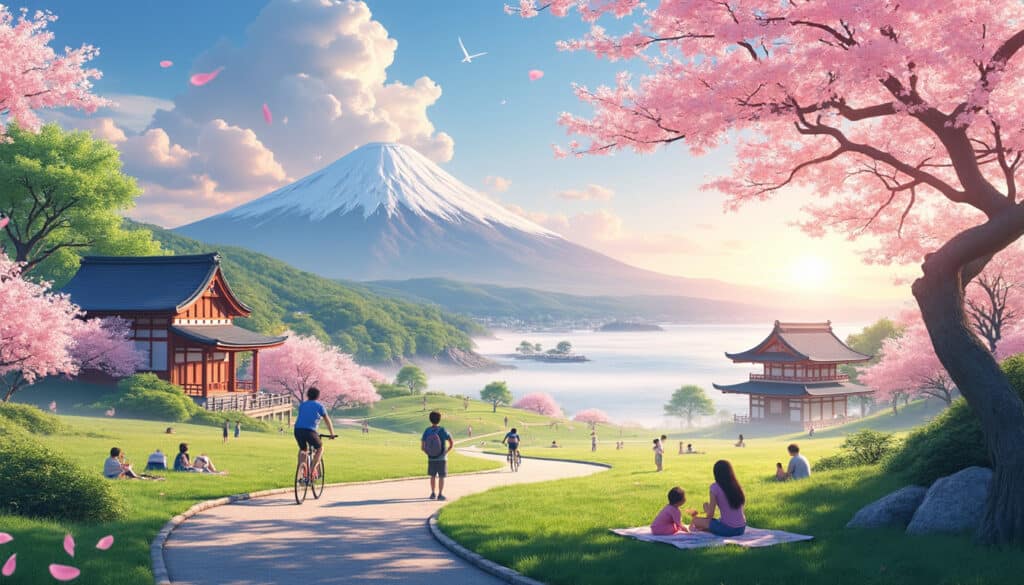
Chiba, a vibrant coastal city in Japan, is known for its unique climate and weather patterns that shape its landscape and lifestyle. Situated in the northern hemisphere, Chiba experiences a humid subtropical climate, which translates into mild winters and hot,…
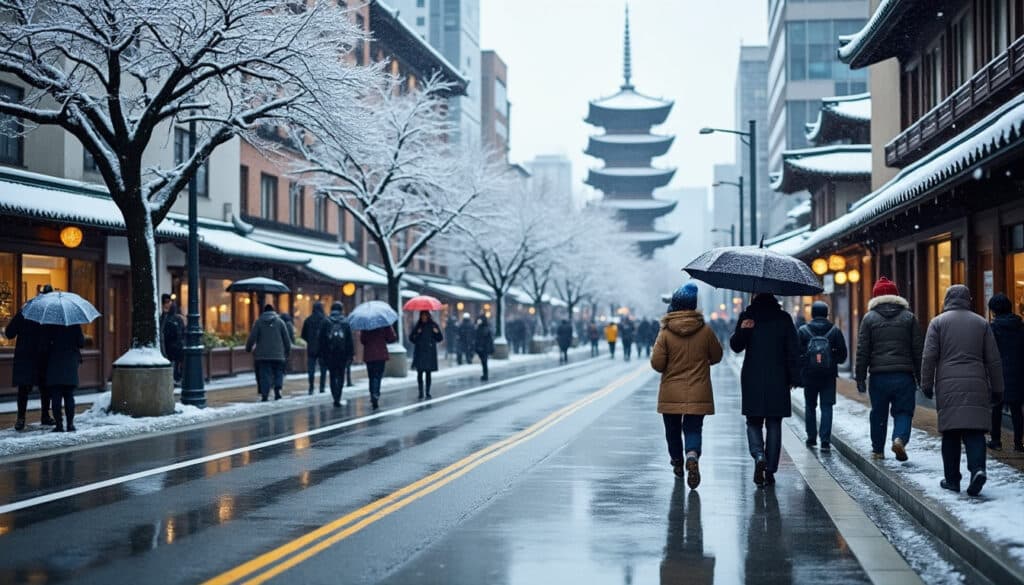
The cold season in Chiba brings a unique charm to this beautiful city in Japan, where the landscape transforms into a captivating winter wonderland. Nestled in the Kanto region of Honshu Island, Chiba experiences a distinct winter characterized by brisk…

Flooding and natural risks in Chiba
The beautiful coastal region of Chiba, Japan, is renowned for its stunning landscapes and vibrant culture. However, being one of the prefectures at the curved edge of Honshu Island, Chiba is frequently exposed to a variety of natural risks such…
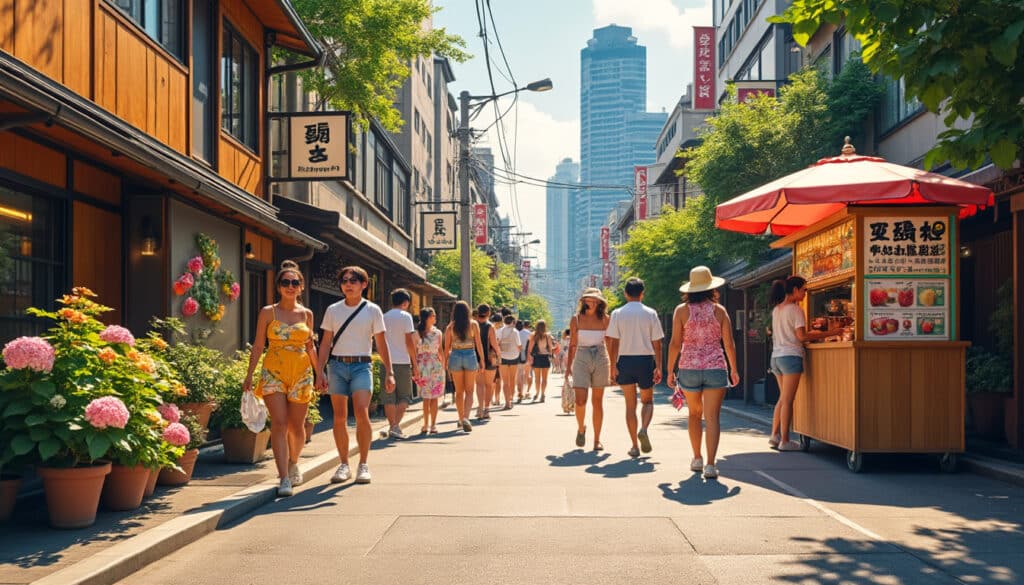
Chiba, a beautiful region situated near Tokyo, transforms into a warm haven as the summer season approaches. Famed for its rich history and vibrant local culture, Chiba attracts numerous visitors each year. However, the increasing temperatures have posed certain challenges…
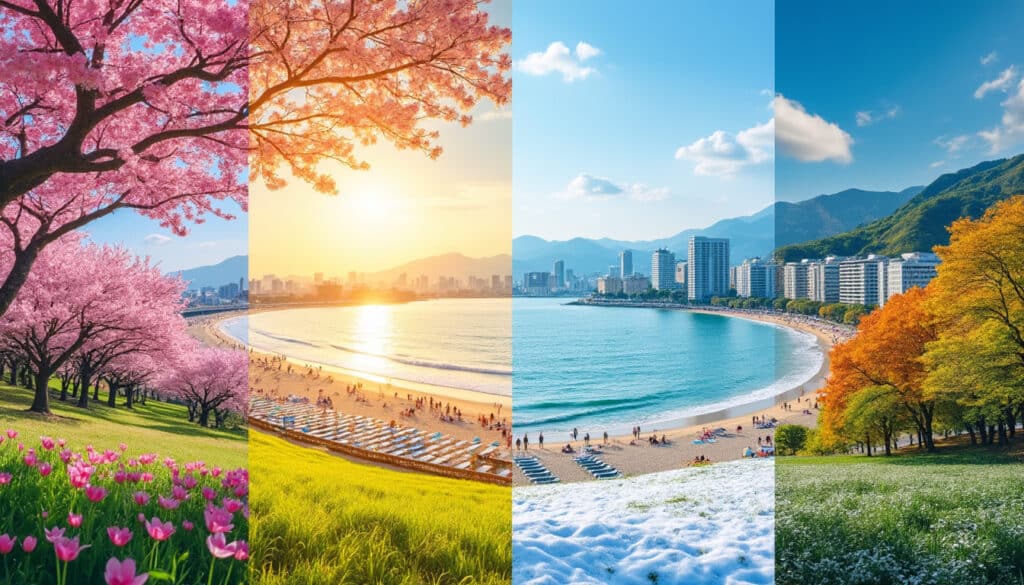
Is Chiba warm throughout the year?
Explore the subtropical charm of Chiba, where the Pacific’s whispers shape the landscape and climate. This Japanese gem, nestled amidst bustling cities and rolling coastlines, presents an intriguing blend of warmth and cultural allure. Whether wandering through cherry blossom lanes…

Rain and precipitation in Chiba
Chiba, located on the east coast of Japan, presents a fascinating climatic profile characterized by significant rainfall distributed throughout the year. This phenomenon plays a crucial role in shaping the lifestyles and environmental framework of the region. Understanding the patterns…
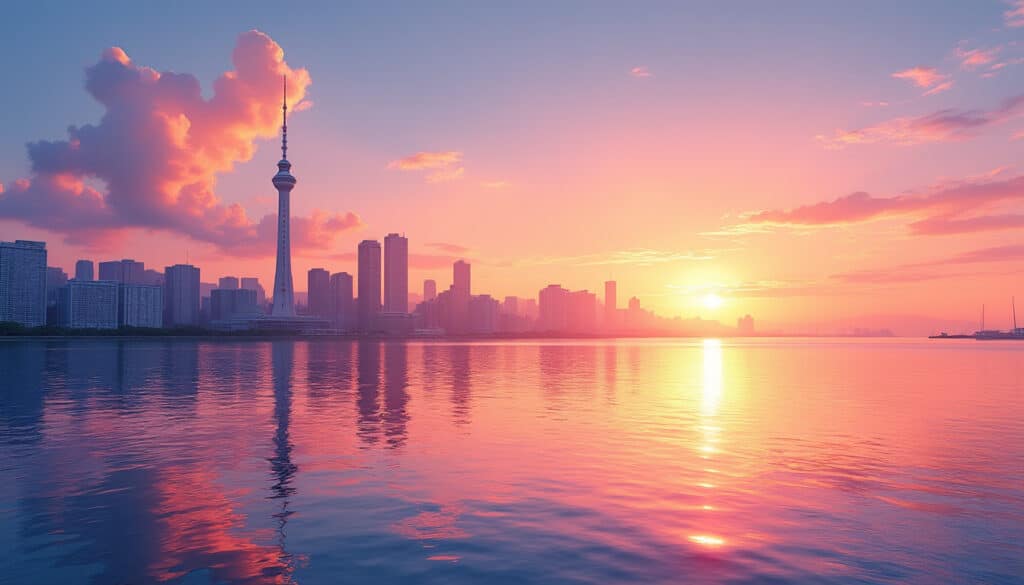
Witnessing the sunrise in Chiba, Japan, is a breathtaking experience that offers both tourists and locals a moment of tranquility and wonder. The city, known for its beautiful landscapes and proximity to the Pacific Ocean, provides a perfect backdrop for…
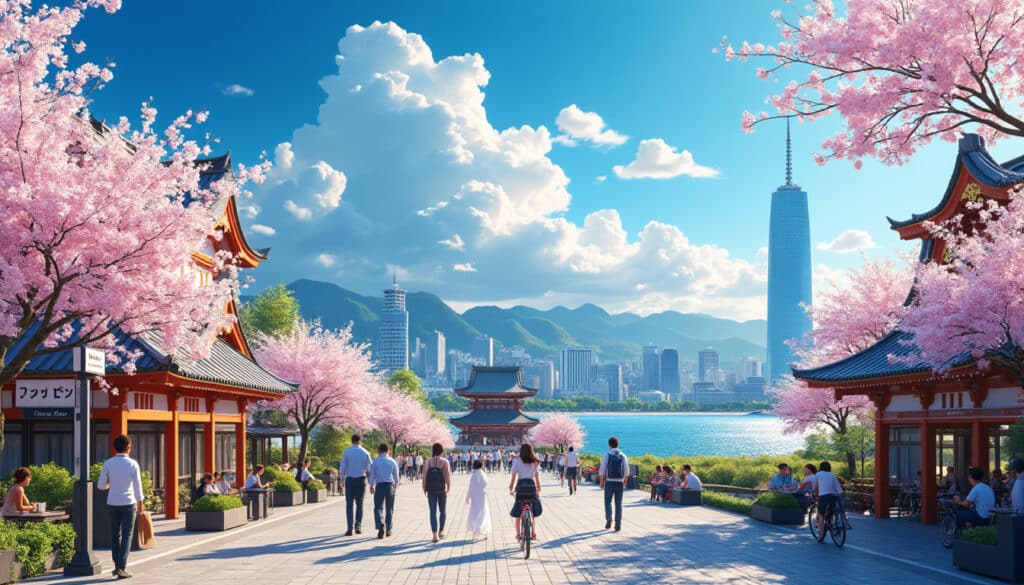
Chiba, Japan offers a diverse and captivating climate that entices both visitors and locals alike. 🌸 From balmy summer days to cool winter nights, this coastal city experiences a harmonious blend of weather patterns due to its humid subtropical climate.…
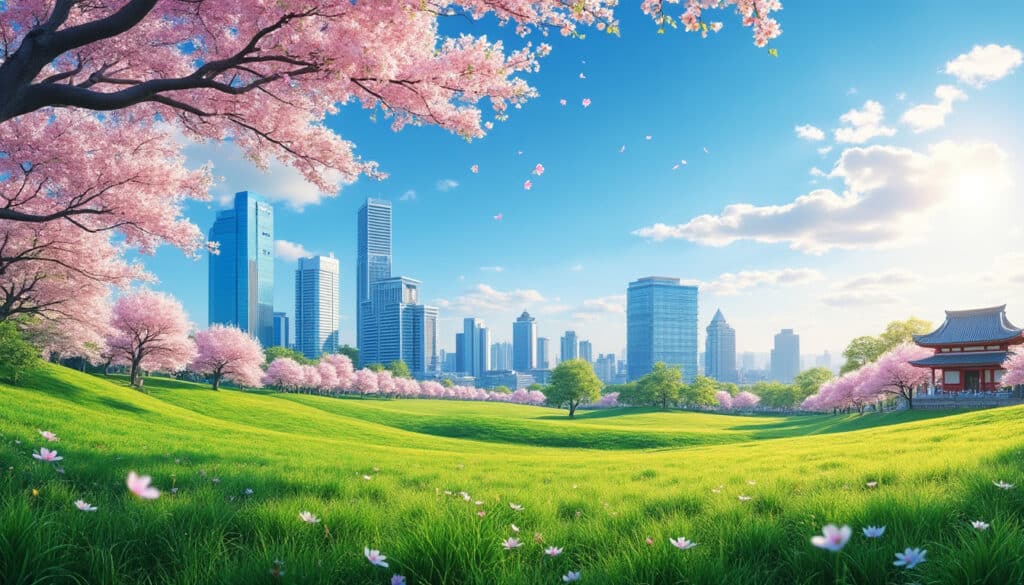
What is the weather like in Chiba?
Home to landscapes as diverse as its cultural tapestry, Chiba’s weather offers a unique blend of natural allure and meteorological challenge. Situated east of Tokyo, this coastal city combines the charm of urban life with the tranquility of nature, attracting…


